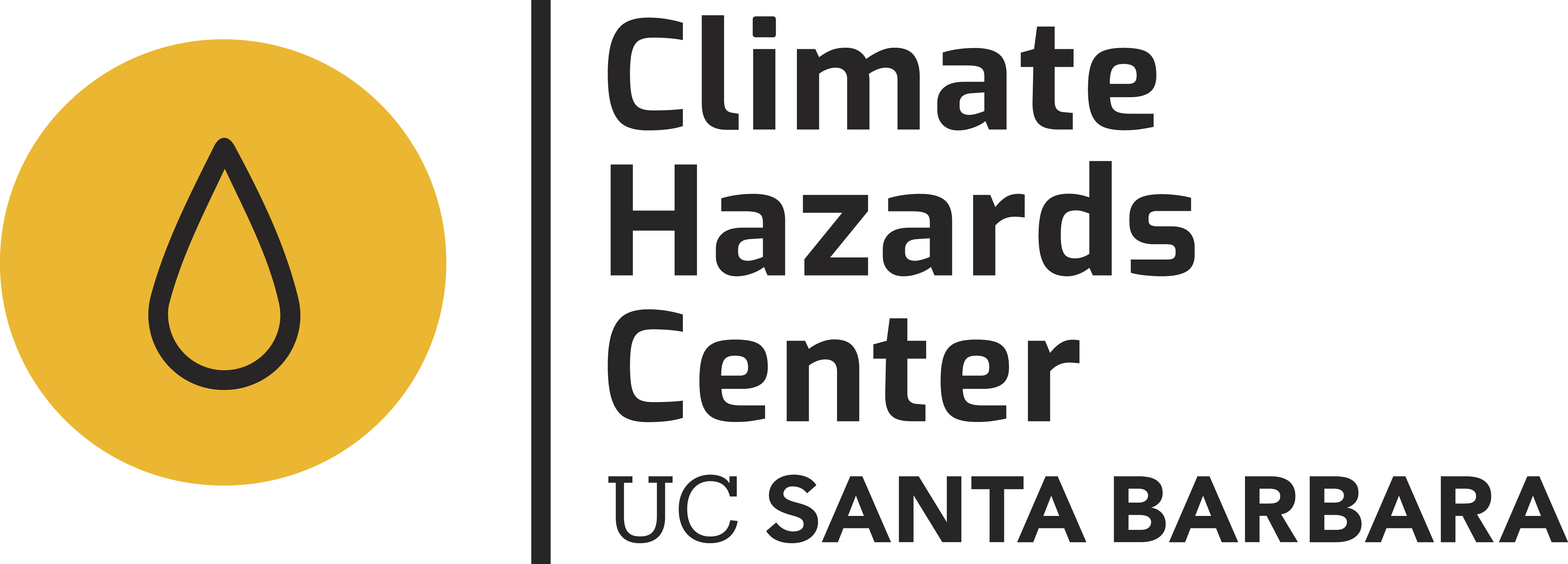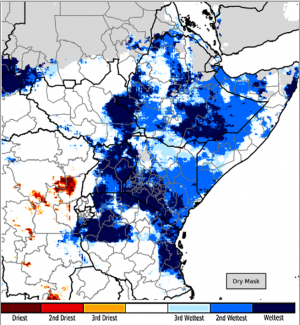The Climate Hazards Center contributed to a FEWS NET Special Report titled “2019 Short Rains in East Africa Among the Wettest on Historical Record."
This report was produced through close collaboration between FEWS NET partners at the UC Santa Barbara Climate Hazards Center, USGS, NASA Goddard, and Chemonics.
Lead coordinators were Laura Harrison (UCSB CHC), Lark Walters (Chemonics), and Gideon Galu (FEWS NET/USGS). Major contributions were made by Chris Funk (UCSB CHC/USGS), Kim Slinski and the FEWS NET Land Data Assimilation System team (NASA Goddard), and Will Turner (UCSB CHC).
Key Messages:
- The October to December 2019 rainfall season ranked among the wettest rainfall seasons in East Africa in at least 40 years. Exceptionally above-average rainfall led to widespread floods, resulting in the displacement of hundreds of thousands of people and causing crop and livestock losses in worst-affected areas. According to OCHA, approximately 3.4 million people were affected across the region.
- The floods have occurred in the context of consecutive seasons of climatic shocks in the greater Horn of Africa, including the severe 2016/17 drought, floods in March to May 2018, and the 2018/19 drought. Climatic shocks, coupled with the impact of conflict, insecurity, and poor macroeconomic conditions, are primary drivers of acute food insecurity across the region. In December 2019, 18-22 million people were estimated to be facing Crisis (IPC Phase 3) or worse outcomes in East Africa.
- Assessments of the impact of heavy rainfall and flooding and crop and livestock production are currently ongoing at the national and sub-national level. Preliminary estimates indicate that although significant crop losses occurred in riverine areas and some marginal agricultural areas due to floods or excess soil moisture, national cereal crop production in Somalia, Kenya, Ethiopia, South Sudan, and Uganda is likely near to above average. Exceptional vegetation conditions have also supported relative improvements in herd growth and milk productivity.
- High soil moisture, wind patterns, and above-normal vegetation have created conducive ecological conditions for an ongoing desert locust outbreak in the region. The outbreak is considered the worst in 25 years in Ethiopia and Somalia and in 75 years in Kenya. Although current food security impacts are not large-scale, there is high concern for breeding and spreading in early to mid-2020. This could lead to adverse impacts on cropping and vegetation conditions in the next cropping season beginning March/April 2020, especially in insecure areas where aerial spraying is not possible.
- The extreme rainfall season was largely attributed to a strong and long-lasting positive Indian Ocean Dipole (IOD) – one of the strongest on record. The event peaked in October (at +2.1 °C) and remained strong into December. Although the IOD has currently weakened to neutral mode, warmer-than-normal sea surface temperatures forecast through March may influence slightly above average rainfall in parts of equatorial East Africa.
February 6, 2020 - 1:25pm

